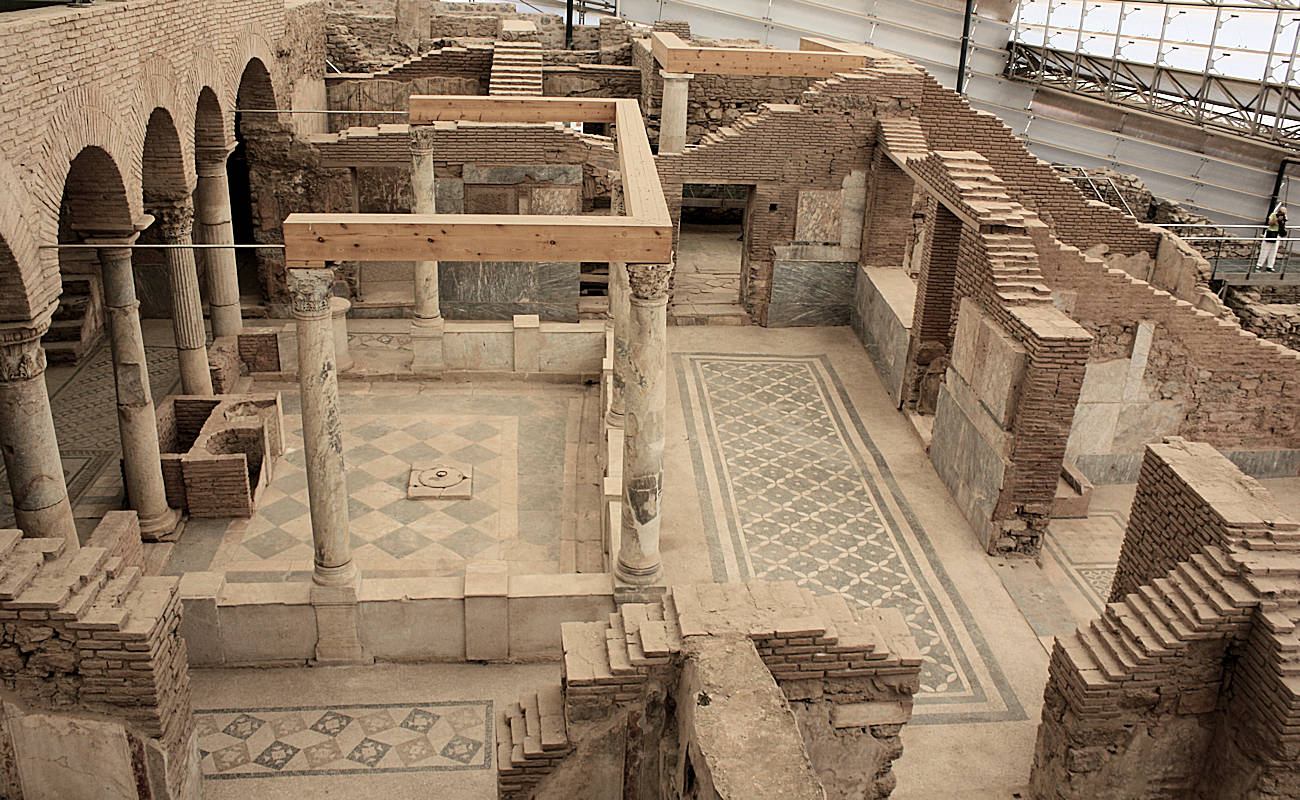
Ephesus Terrace Houses
Ephesus Terrace Houses offer a unique glimpse into the lives of the wealthy Ephesians who once inhabited them. Located just behind the shops near the Library of Celsus, along Curetes Street, are six luxurious residential buildings known as the Slope Houses or the Ephesus Terrace Houses. These houses were in use from the 1st century AD through the 7th century AD.
They were abandoned in the 7th century AD due to a series of devastating Arab raids and the continued silting up of the harbor, which caused the Ephesians to move to Ayasuluk Hill. After being abandoned, these houses fell into decay or were buried under soil from landslides. The soil has preserved the houses well, and their contents have offered archaeologists a close look into the lives of the Ephesian upper class during the Roman and Byzantine periods. The excavations of the terrace houses began in 1960 and continue to this day. Two of the houses have been fully restored and are usually open to the public. The rest are sometimes covered by a tent due to ongoing excavations.
These houses were constructed using the Hippodamian grid style plan, which was popular in the city during Roman times. Each house had multiple stories and an atrium with an entrance onto the side street. The ground floor contained living and dining rooms, while the upper floor held the bedrooms and guest rooms. The houses were equipped with running water and heating supplied through clay pipes, similar to the city’s bath houses.
Each house featured an elaborate series of decorations. One of the houses open to the public features a black-and-white mosaic and a marble floor with the remains of a fountain in the centre. The walls are adorned with frescoes depicting theatre scenes. The other house has undergone several alterations and extensions. It boasts mosaics and frescoes in several rooms, as well as an atrium with Corinthian columns. A 5th-century glass mosaic in a niche portrays the heads of Dionysus and Ariadne. During this time, Rome would have already converted to Christianity, making the pagan subject particularly interesting to archaeologists.
